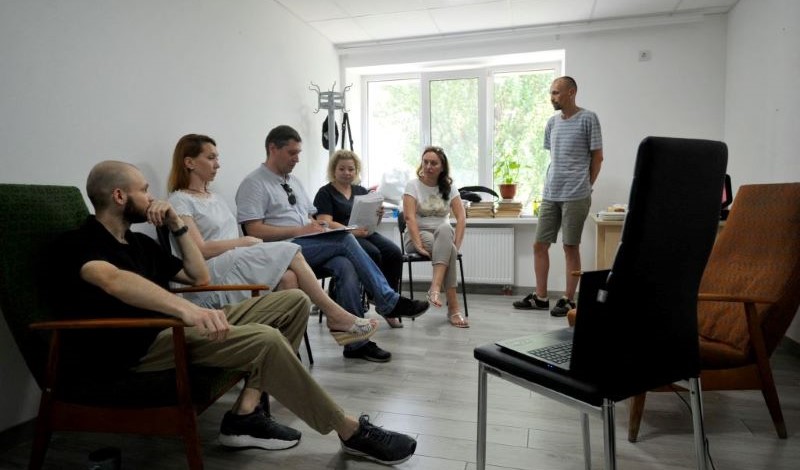
Scholars examine regulatory solutions for improving behavioral health care.
One in five U.S. adults suffer from a clinically significant mental or substance abuse disorder. In recent years, the prevalence and intensity of these conditions have increased among children and adolescents, a trend exacerbated by the COVID-19 pandemic.
Housed within the U.S. Department of Health and Human Services (HHS), the Substance Abuse and Mental Health Services Administration (SAMHSA) aims to improve the quality and availability of treatment and rehabilitative services for behavioral health challenges. Although SAMHSA oversees the enforcement of behavioral health provisions in a series of federal laws and regulations, it delegates authority for many of its programs and services to states, tribes, territories, and local and community organizations. Despite this widespread decentralization, gaps in behavioral health care persist.
With over 46 million undiagnosed behavioral health cases and many millions more individuals lacking access to quality and insured care, the United States faces serious and complex challenges to the adequate provision of behavioral health services. Individuals report limited insurance coverage, an undersized mental health workforce, lack of available treatment, disconnect between primary care and behavioral health systems, and insufficient resources to cover treatment as barriers to accessing assistance. Other obstacles to care include social stigma, prejudice, and discrimination against those with behavioral health disorders.
As a result of these systemic barriers, racial and ethnic minorities, as well as under-resourced and vulnerable populations experience poor mental health outcomes at higher rates. To address these disparities, lawmakers, practitioners, and community advocates look to behavioral health integration—which would allow primary care providers to deliver behavioral health care—Medicaid expansion, and behavioral workforce growth, among other means. The delivery of mental health and substance use treatment via telehealth services has also increased since the onset of the COVID-19 pandemic, which highlighted the paucity and inequity of behavioral health resources.
In this week’s Saturday Seminar, we feature the work of experts who discuss regulatory solutions to the behavioral health crisis.
- The United States faces a shortage of licensed behavioral health care providers as rates of mental illness and substance abuse in the country increase, explain Michele Gilbert and several coauthors in a report for the Bipartisan Policy Center. They note that the limited availability of providers who participate in insurance networks limits the availability of treatment, especially for marginalized communities who can’t afford treatment out-of-pocket. To address this access gap, policymakers and lawmakers should cover behavioral health specialists under Medicare and Medicaid and institute a pipeline program to increase their licensure, Gilbert and coauthors argue. Furthermore, they recommend that the Centers for Medicare and Medicaid Services leverages underused community resources by establishing a demonstration program for funding community-initiated care.
- In a recent article published in Psychiatric Services, Amy G. Bonilla of the Veterans Health Administration and several coauthors studied the relationship between the presence of mental health staff in primary care settings and rates of mental health treatment. Bonilla and her coauthors found that low-income and uninsured patients who sought medical attention at health centers with at least one full-time mental health staff member had a higher probability of receiving mental health treatment compared to patients at health centers without staff. In light of their findings, they argue that employing mental health staff at health centers can help low-income and uninsured patients access treatment. They suggest that the Center for Integrated Solutions of SAMHSA and the Health Resources and Services Administration provide “financial incentives” and “technical assistance” to encourage health centers to employ mental health staff.
- In an article published in Administration and Policy in Mental Health and Mental Health Services Research, Elizabeth M. Stone of John Hopkins Bloomberg School of Public Health and several coauthors examine barriers to implementing behavioral health homes in Maryland. Behavioral health homes, Stone and her coauthors explain, are healthcare programs focused on the integration of mental health and primary care services for patients with serious mental illnesses. In these programs, specialty mental health services coordinate with primary care providers to deliver physical care to their patients, they describe. They find that barriers to implementing these programs include staffing shortages and coordination with external providers. To overcome these challenges, Stone and her coauthors argue in favor of implementing financial incentives to encourage primary providers to coordinate with behavioral health homes. They also advise regulators to develop policies focused on holding behavioral health homes “accountable for participant outcomes” to promote quality care for high-need individuals.
- In an article published in Temple Law Review, Taleed El-Sabawi of Elon University School of Law and Jennifer J. Carroll of Elon University propose the Model Behavioral Health Response Team Act to help policymakers create new institutions to address housing, mental health, and substance abuse crises. The central purpose of the model act, according to El-Sabawi and Carroll, is to develop crisis call centers and behavioral health crisis response teams that would replace state and local reliance on law enforcement and police institutions. El-Sabawi and Carroll emphasize that this model act must expressly authorize local governments to establish these programs without the staffing of law enforcement officials, partly because these teams are not intended to facilitate institutionalization or incarceration. The model act would therefore avoid replicating historically racist institutions by preventing the “co-opting” of public health policy by law enforcement, argue El-Sabawi and Carroll.
- In a report issued by the Behavioral Health Workforce Advisory Committee, experts explain that HHS is looking to expand the number of professions eligible for credentialing through the Substance Use Disorder (SUD) alternative training pathway. The committee describes how HHS created this training pathway to credential new mental health practitioners, including social workers, psychologists, and physicians, after finding there were not enough providers with dual certification in mental health and SUD to meet the needs of the populations with multiple conditions. Despite successful use of the SUD alternative training pathway, the committee contends that the SUD-credentialing regulations have created significant barriers, such as high fees, which necessitate exploring other credentialling models.
- In a report for The Century Foundation, Jamila Taylor of the National Women, Infants, and Children (WIC) Association explains the danger of cutting Medicaid coverage for millions of low-income—especially Black women—during pregnancy and the postpartum period. In 2020, Medicaid coverage ceased sixty days after birth, which deprives mothers of critical health services, including mental and behavioral care for postpartum depression, Taylor argues. She contends that by losing health insurance so soon, mothers caring for newborns while struggling to get medical care for their own behavioral health challenges become particularly vulnerable to negative health outcomes, such as chronic illness and mortality. Taylor recommends extending Medicaid coverage in every state to one year after birth to promote maternal behavioral health outcomes.



